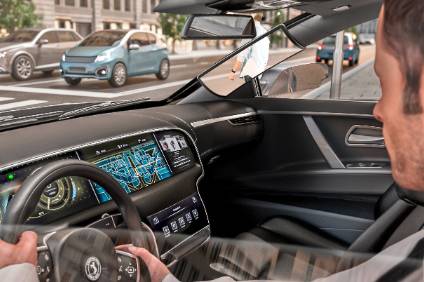
Continental has developed a 'virtual A-Pillar' to help remove forward blind spots. The front support pillars, often referred to as A-pillars, anchor the windshield and the beginning foundation of the vehicle's roof. However, A-pillars have also been identified as visual obstructions for the driver.
Continental's Virtual A-Pillar is designed to address the growing problem on vehicles that need widened front pillars to meet mandatory safety testing. With new flexible OLED displays and advanced head tracking, Continental is bringing enhanced visibility to the driver's view.
The Continental Virtual A-Pillar tracks these movements using an interior camera mounted just above the steering wheel. At the same time, Continental's Surround View camera, mounted on the vehicle's exterior, feeds a live video of the vehicle's external environment to the OLED displays embedded in the A-pillars. By tracking the driver's head movements and pairing them with the exterior live image, Continental says the Virtual A-Pillar offers a dynamic perspective for the driver, giving the driver an experience more like looking through an extended "window" rather than at a live video feed.
"Increasing the safety of all road users, from drivers to pedestrians, is the motivating force behind innovative Continental technologies like the Virtual A-Pillar," said Tamara Snow, head of systems and technology, Interior division, for Continental North America. "By pairing and implementing advanced technology in the vehicle, Continental has created a solution that eliminates the forward blind spots of the A-pillars, helping to reduce a critical safety hazard experienced by so many road users."
"This new technology allows the driver to see pedestrians and other vehicles approaching from the left and right, which would have otherwise been blocked by the A-pillar," Snow added.

US Tariffs are shifting - will you react or anticipate?
Don’t let policy changes catch you off guard. Stay proactive with real-time data and expert analysis.
By GlobalData


